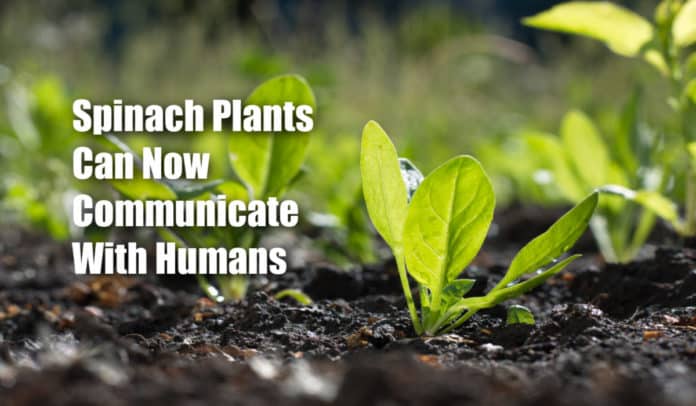Modernistic & avant-garde science fiction films come to reality. MIT scientists have tailored spinach plants in such a way that they can send emails.
Engineers from MIT have reformed spinach plants into sensing units with the potential to detect incendiary materials using nanotechnology. Later these plants can wirelessly share this data with the researchers.
A signal is emitted by the carbon nanotubes present inside the leaf of the plant as and when the roots sense nitroaromatics, a commonly found element in incendiaries such as landmines, in groundwater. The detected signal is further processed by an infrared camera, sharing an email notification with the researchers.
This study comes under a huge exploratory research project involving the manipulation of plants with electronic systems and components. This methodology of processing plants efficiently by imparting new skills is referred to as plant nano bionics.
Project supervisor Prof. Michael Strano elucidated that plants are ideal analytical chemists as they possess a broad root network in the soil which are persistently sampling underground water and can carry water to the leaves with a self-powering system.
He added that this is a new and unique illustration of how they have addressed the plant-human communication hurdle.
Environmental Potential
While the intention of this study was to sense incendiaries, Strano and other researchers hope that it could be employed to easily alert scientists about environmental conditions like pollution.
As a result of the huge amount of data plants soak up from their environment, they are befitting for tracking ecological alterations.
In the initial stages of plant nano bionic study, Strano employed nanoparticles to transform plants into biosensors for detecting pollutants. Modification of the plants’ photosynthesis mechanism enabled him to make these plants sense nitric oxide, a harmful substance released during combustion.
Strano stated that plants actively respond to the environment. They can sense drought way before humans can. Plants can even sense minute modifications in the water potential and soil properties. If it is possible to control these chemical signaling pathways, there will be a huge wealth of information to acquire.
Whenever the spinach plants’ detectors remain dormant, they can be controlled to efficiently power fuel cells as well.
Researchers from the American University have identified that carbon nanotube-spinaches can operate as a catalyst to produce fuel cells and metal-air batteries productively.
Prof. Shouzhong Zou, the main author, described that this study proposes a way for the production of sustainable catalysts for an ORR (Oxygen Reduction Reaction) from natural entities.
Compared to lithium-ion batteries, found mostly in commercial products such as smartphones, metal-air ones are better alternatives because of excellent energy efficiency.
Spinach was particularly chosen as it is rich in nitrogen and iron, which are crucial components for catalyzing compounds. The scientists had to cleanse, blend, and crush the spinach into powder form, converting it from edible to nanosheet matter appropriate for the technology.
Prof. Zou mentioned that the technique they employed can yield highly dynamic carbon-based catalysts from renewable biomass such as spinach. As a matter of fact, they hope it surpasses commercial platinum-based catalysts in both stability and activity.
Plants Can Send Emails To Scientists



